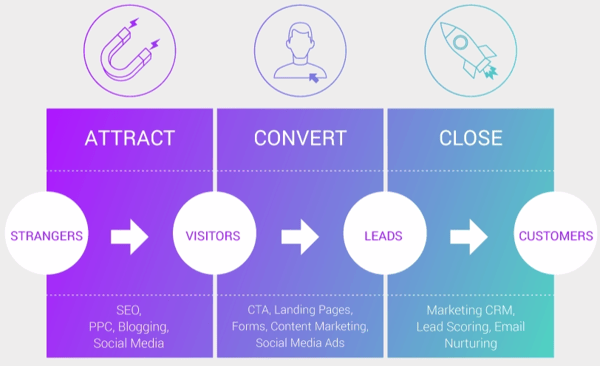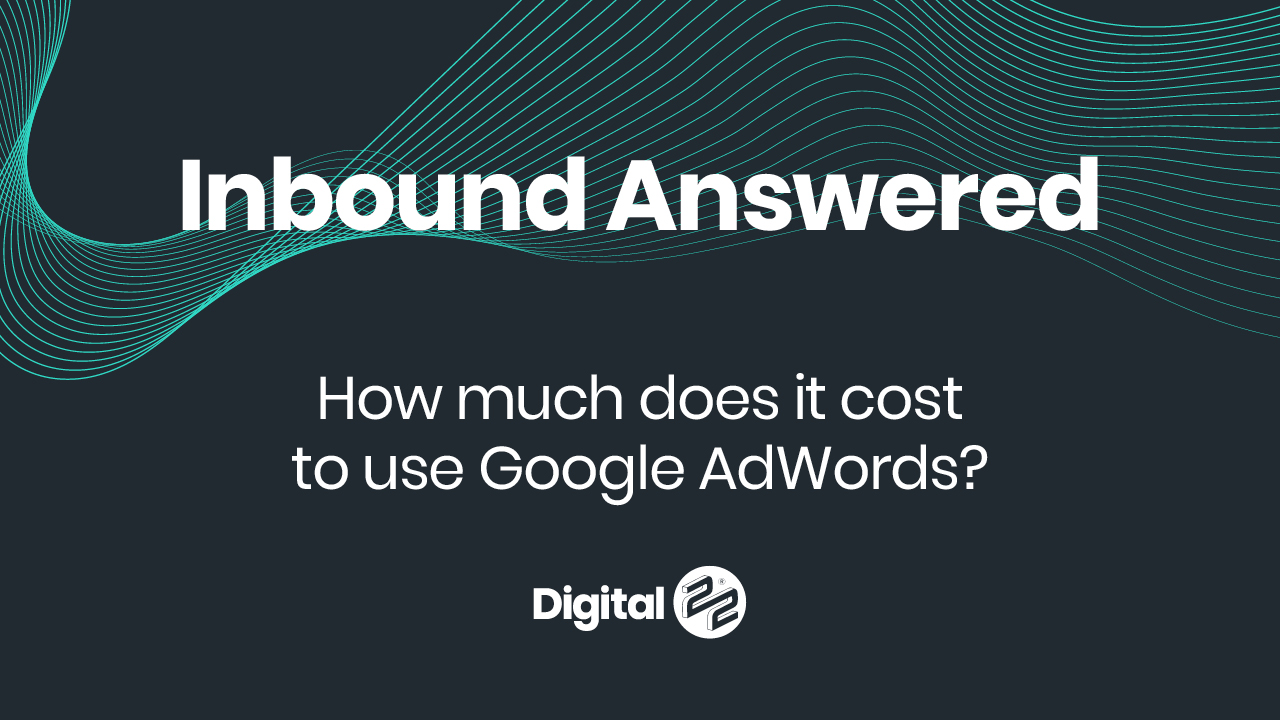Revenue Operations is a strategic approach to aligning sales, marketing, and customer success...
By now, you must have heard just how important inbound video is to your marketing efforts. However, filming your inbound videos and actually implementing that into your inbound marketing content strategy plans are two different things. You need to know how it fits into inbound marketing, the buyer’s journey, the Flywheel and more. Here’s how to add inbound video content to your strategy plans.

Inbound video as a concept
Inbound video isn’t here to entirely replace all written content, but it’s certainly a brilliant addition to provide to visitors.
Those same pain points are being targeted - only quicker in some cases which is what your personas might prefer rather than scrolling through lengthier blogs.
You can argue that inbound videos work in the exact same way as a blog. The aim is to provide plenty of value and give solutions to problems.
The topic in both mediums need to be relevant and something personas actually care about for them to either read a blog about it or click on the videos you’ve filmed.
However, it’s important to be smart with inbound videos. When you’re adding them to your inbound marketing strategy, don’t make videos for the sake of it. When rushing, this can compromise the overall quality and this doesn’t leave a great impression.
Instead, be smart about the types of inbound videos you film and make sure that there’s always enough value in them for the viewer and their challenges.
At the same time, don’t assume you need to spend hours on end adding in some amazing transitions and effects. That can backfire as HubSpot research has shown that people prefer more simple and raw content as it feels more authentic compared to heavily edited footage. What this means is that it’s cost-effective to get started as you don’t need to dish out hundreds of pounds right away, as even smartphones can shoot videos in 4K.
More and more people are preferring video content than any other type of content now, plus Facebook is also catching up to YouTube when it comes to channels that people are watching videos.
When you consider that videos on landing pages, for example, can increase conversion rates by 80 percent and 90 percent of customers say videos help them make buying decisions, it’s quite clear just how important it is to put them in your inbound marketing content strategy.
Inbound video and inbound marketing: how they fit together
When you’re talking about inbound video fitting into the wider inbound marketing picture, taking a quick look at the methodology shows exactly why it fits in perfectly. The inbound methodology is a marketing approach focused on attracting customers through content and interactions that are both helpful and relevant.
Clearly, written content isn’t the only way to achieve that.

Every video you create should acknowledge the pain points of your audience and make sure that all inbound video content provides a solution. When you look at the bigger picture, the inbound video content guides people through the journey of becoming are of, evaluating and purchasing the product or service - which is the end goal. So, inbound video can help accelerate that process.
Attract
Any inbound videos you create at this stage - when you’re trying to turn strangers into visitors - should empathise with their problems. Also, the inbound videos need to introduce a possible solution.
The whole point of it here is to build trust and expand reach and as you’re looking to increase those all-important share numbers up for your video content, it’ll be more entertaining than educational.
Still, provide enough value in every inbound video so you make yourself look like experts. However, like with regular inbound content, never speak about your services and let the video and the personalities in there do the talking. When you’re planning video content for your inbound marketing strategies, consider these video examples to film:
- Social videos to show off your personality.
- Thought leadership videos to establish yourself as an industry leader.
- Brand films that share your values.
- Explainer and how-to videos that provide relevant topics for solving pain points.

Convert
Once your videos have attracted an audience, newer videos now help to convert them into leads. In regular inbound marketing content, this is mainly done by collecting information through forms. You can instead use videos here as the process can be aided by providing a visual solution to the buyer’s problem. Here, think about making videos that can both excite and educate viewers.
- Webinars packed with useful advice.
- Sending product of software demos through email.
- Landing page promotional videos.
- Case studies.
- More in-depth explainer and how-to videos.

Close
Once you’ve attracted an audience through your inbound video content and have converted the right visitors into leads, video content can also help close those leads into customers. Here, the consumer is weighing their options and is deciding on whether to purchase or not so the goal for your videos should be to make your audience visualise themselves using your service.
HubSpot’s 2018 marketing statistics have shown that there are four times as many customers that would rather watch a video about a product than read about it. So videos here in your inbound marketing content strategy can feature video content that leverages emotion that words sometimes can’t get across. Types of videos to consider include:
- Testimonials of customers with stories that are relatable to your leads.
- More in-depth product or software demos.
- Culture videos to sell the quality of service to viewers.
- Personalised videos which explain exactly how you can help them.
Delight
Even though customers might make the purchase, it doesn’t mean your video content should end there. When you bring the Flywheel into the equation, there are plenty of videos that you can film which can leverage the post-conversion stage of the Flywheel. Here, the goal of the videos in your content strategy is to continue providing remarkable content.
The reason behind this is it makes the users’ interaction with your services as amazing as possible. We know, however, that the hope is they’ll tell their connections about their experiences which turns them into promoters and the entire process can be repeated for other visitors. So, create videos that will encourage customers to embrace your brand.
Types of videos to include here are:
- Thank you videos after the purchase to welcome them.
- Onboarding videos to get them rolling with their purchase.
- Build out a library of training videos and educational courses to help users expand their expertise further.
The same can be applied to the Buyer’s Journey as well. Each stage of the journey is crucial when it comes to inbound success, so adding video content into your inbound strategy alongside written content can be a huge boost.
Here are more types of video content you can include at each stage of the Buyer’s Journey.
Awareness content
- Turn educational blogs into shorter and easily digestible video snippets.
- Turn written troubleshooting tips into video format.
- Turn sections of written downloadable guides into video format.
Consideration content
- Turn your audio podcasts into video podcasts.
- Turn your written technical blogs into shorter videos.
- Produce webinars and online Q&A’s.

Decision content
- Rather than having written client case studies, have them film short snippets to make it feel more genuine.
- Show video competitor comparisons alongside infographics.
How to manage the process
Turn blogs into videos
As a marketer, it’s easier than ever to get involved with inbound videos. For example, it takes only basic equipment and the confidence to sit in front of a webcam and create a video version of a blog. In this case, find your best and worst performing blogs and test out how successful they’d be if they had video versions instead.
By making them shorter and more digestible, you’ll have a better idea of what your audience prefers and what you can do more of in the future. This is a great method to include in your inbound marketing content strategy as it gives you more of a chance of your blogs succeeding, whether it’s in written or video form.
Make your own short videos - remember, they don’t need to be perfect
As we mentioned above, it’s not that difficult getting started. Don’t be afraid of sitting in front of your laptop and using your voice to explain what’s happening on the screen. They can literally be a couple of minutes and that alone is enough to provide plenty of useful value. This is extra beneficial if you take out a couple of minutes out of your day each week to build up a bank of educational and useful video content for visitors to watch.
An easy assumption to make about filming video content is that you need to have the finest equipment and the best editing software available. That’s not really the case as you shouldn’t always strive for perfection here as you’re not the expert - a basic starting point is better than nothing at all.
Going overboard with editing doesn’t really help make amazing videos for all situations. The reason behind that is it doesn’t feel too genuine as people prefer raw and unedited footage which feels more authentic. That can lead to more trust and that’s what we’re aiming for.
For example, take a look at this video one of our team put on LinkedIn. It was recorded using Vidyard on a Chromebook with a Jabra headset we use for video calls. That's it. And it lead to two conversations with potential customers...

Videos you can get started with
Considering you can dive in right away with inbound videos, we’ve compiled a list of the different types of starter videos you should plan on filming right away.
- About Us
- Meet the Team
- What We Do
- Event Videos
- How-to Videos
- Video Interviews
- Video Podcasts
- Explainer Videos
- Case Studies
- Testimonials
- Live Videos
All of the videos highlighted above are great starting points. The reason behind this is that you’re not just making videos for the sake of it as each adds value. For more in-depth explanations on how to film each video type and why they’re important, check out this blog.
Learn more about all things video and join our inbound marketing community
Adding inbound video into your inbound marketing content strategy is a great way to drive optimal results. However, it’s not the only place that video can help.
Sales, recruitment, HR, internal comms, project management and customer relationships all benefit from an aligned and simple video approach. As well as marketing, of course.
A business wide adoption of video can transform a business. You can read about the impact we've seen it have here in this blog post or check out a range of ways to transform your business by using video here...
Plus, inbound video is just one small section of inbound marketing and so many other aspects come into play. That’s why we’ve created an easy-to-read guide on all things inbound marketing.
Whether it’s the Flywheel and SEO or workflows and form fields, we’ve got you covered. Until that's ready, why not join our private Facebook group for all things inbound marketing? Click on the link below to join.



